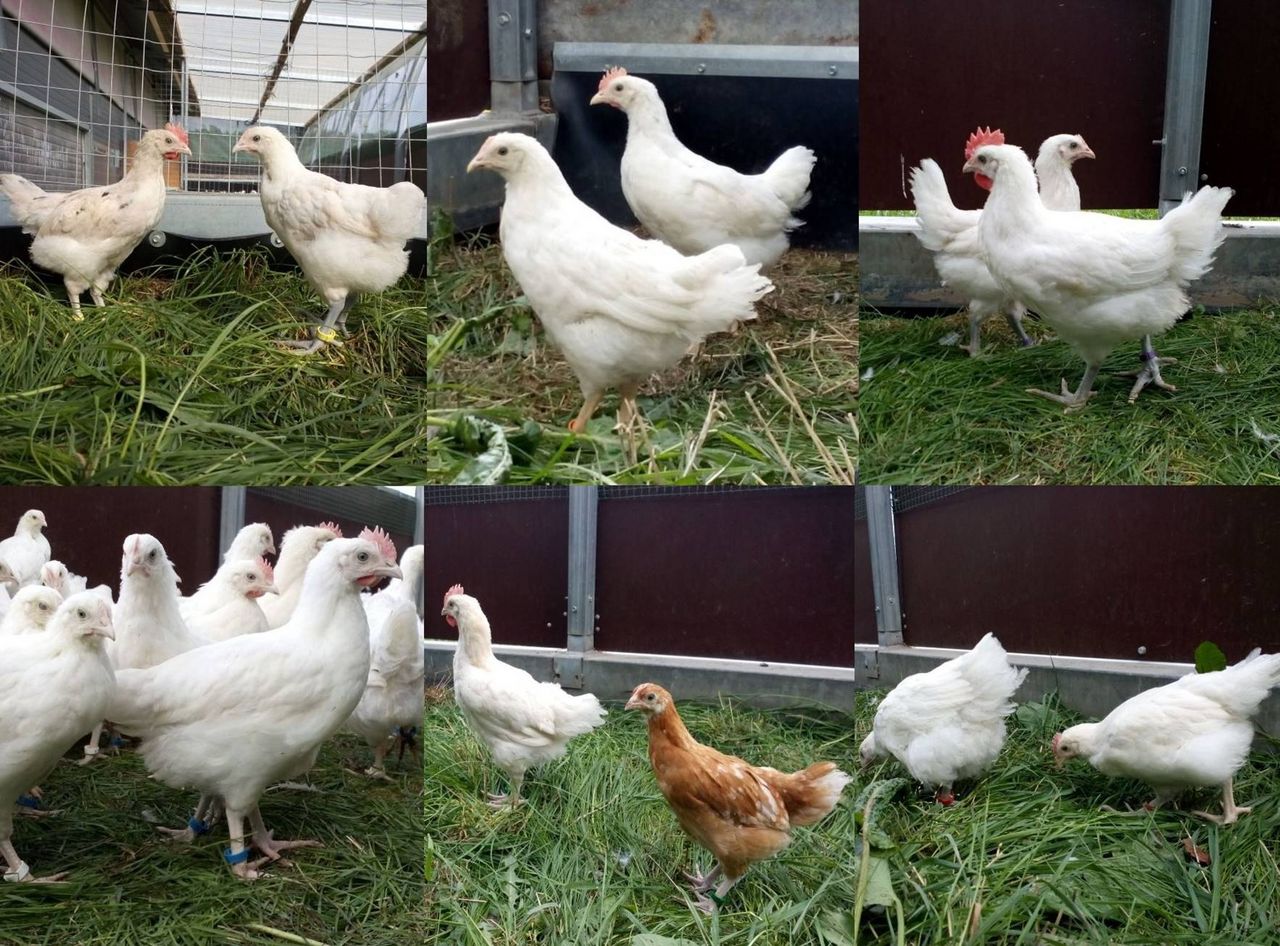Project
Colorful chicken

Comparison of fattening and laying performance of six dual purpose genotypes in order to evaluate their potential for commercially independent breeding of chicken for organic husbandry
So far, organic chicken farms rely on the same high-performance hybrids as conventional farms. As groundwork for breeding an organic chicken, this project compares six dual purpose genotypes and evaluates their potential for organic agriculture.
Background and Objective
Animals are best adapted to a husbandry system when they were selected within that system. Therefore, the almost exclusive use of commercial chicken hybrids in organic agriculture is not optimal. Further, it should be considered that the commercial hybrids were selected either for fattening or for laying performance, leading to the ethical dilemma of culling day old male chicks of layer hybrids. The Ökologische Tierzucht gGmbH was established 2015 in order to breed an economically competitive dual purpose chicken for the organic sector. As groundwork for these breeding efforts, this project compares four experimental crosses from ÖTZ stock and two already established dual-purpose genotypes with regard to their fattening and laying performance, in order to estimate their potential for future breeding.
Approach
The following four crosses from ÖTZ stock were specifically produced for this project: New Hampshire*Bresse, Bresse*New Hampshire, White Rock*Bresse, Bresse*New Hampshire. In addition, purebred Bresse are included in the project, because this meat breed is successfully used as a dual-purpose breed on some organic farms. Also, the high-performance layer hybrid Lohmann Sandy is included, because it is used as part of an organic production system in Austria, in which the cockerels are fattened and used for meat production as well.
Mixed-sex groups of all genotypes are reared at Bauckhof Klein-Süstedt. The cockerels are slaughtered when they have reached the appropriate weight, and the pullets are reared until they are ready to lay. The hens are then kept for a whole one-year laying period at Thuenen Institute of Organic Farming.
Results
The fattening performance of the cockerels did not differ between the crosses. At the age of 15 weeks, the cockerels reached a live weight of roughly 2,4 kg, and a slaughter weight of about 1,5 kg. The laying performance of the female crosses was 250 total eggs per average hen (week 20-72), which was considerably lower than the performance of the layer hybrid Lohmann Sandy. Average egg weight, however, did not differ from Sandy as was therefore in a market-relevant range. The hens of the New Hamopshire crosses consistently showed better plumage scores than the White Rock crosses. On the other hand, the hens of the White Rock crosses showed a tendency towards better laying performance.
Involved Thünen-Partners
Involved external Thünen-Partners
- Ökologische Tierzucht gGmbH
(Mainz, Deutschland) - Bauckhof Klein-Süstedt
(Uelzen, Deutschland)
Funding Body
-
Bundesland Niedersachsen
(national, öffentlich)
Duration
2.2017 - 12.2018
More Information
Project status:
finished
Publications
- 0
Baldinger L, Bussemas R (2021) Dual-purpose production of eggs and meat - Part 1: cockerels of crosses between layer and meat breeds achieve moderate growth rates while showing unimpaired animal welfare. Organic Agric 11:489-498, DOI:10.1007/s13165-021-00357-z
- 1
Baldinger L, Bussemas R (2021) Dual-purpose production of eggs and meat - part 2: hens of crosses between layer and meat breeds show moderate laying performance but choose feed with less protein than a layer hybrid, indicating the potential to reduce protein in diets. Organic Agric 11:73-87, DOI:10.1007/s13165-020-00328-w
- 2
Baldinger L, Bussemas R (2019) Lege- und Schlachtleistung von Hennen aus experimentellen Zweinutzungs-Kreuzungen der ÖTZ. In: Mühlrath D, Albrecht J, Finckh M, Hamm U, Heß J, Knierim U, Möller D (eds) Innovatives Denken für eine nachhaltige Land- und Ernährungswirtschaft : Beiträge zur 15. Wissenschaftstagung Ökologischer Landbau ; Kassel, 5. bis 8. März 2019. Berlin: Köster

![[Translate to English:] [Translate to English:]](/media/_processed_/8/e/csm_Bildschirmfoto_2021-03-03_bearb_fc48ac88bf.jpeg)
![[Translate to English:] [Translate to English:]](/media/_processed_/8/e/csm_Bildschirmfoto_2021-03-03_bearb_ba3ec0e9d7.jpeg)

![[Translate to English:] Logo des Bundesministerium für Ernährung und Landwirtschaft](/media/allgemein/logos/BMEL_Logo.svg)